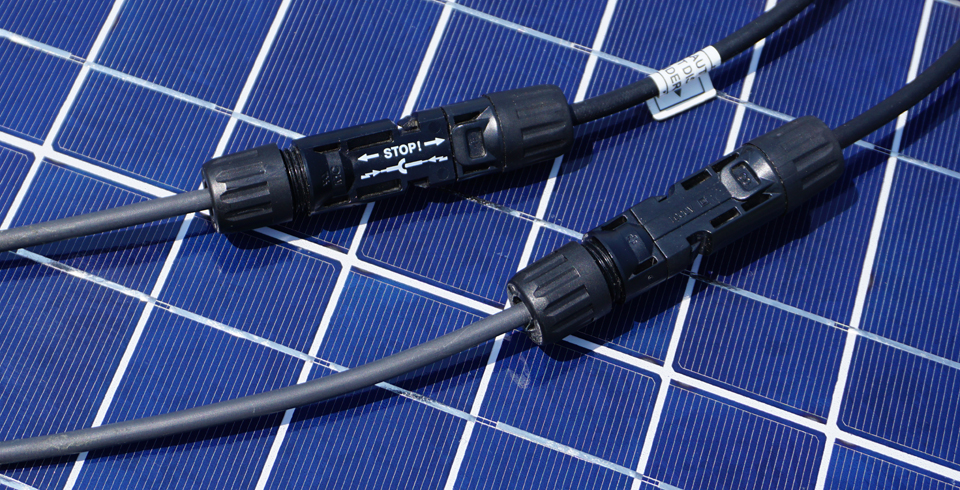
THE ESSENTIAL ELEMENTS OF SOLAR PANEL SYSTEMS
The solar panels, as their name would imply, are an essential part of solar panel systems since they house the photovoltaic cells that turn sunlight into electricity. Although they are the system’s most noticeable portion, there are numerous other elements that are just as important to its performance, effectiveness, and safety. For instance:
- Racks for mounting solar arrays. These parts guarantee that the panels are connected securely, keeping them in the ideal position for maximum sun exposure.
- The DC array disconnects. These parts enable maintenance personnel to manually cut off power to the inverter in order to charge down the system.
- Utility meter, kilowatt meter, and power meter. These elements track how much power the system produces and how much it draws from the utility grid.
- Backup power source. When the solar panels are unable to provide enough electricity to satisfy demand, this component acts as a backup power source.
- Circuit breaker panels, AC panels, and breaker panels. These parts act as fail-safes to shield the electrical circuit of a structure from potential harm.
- Charge-control device. This part guards against fluctuating electricity inflows in electrical systems.
- Clips for managing wires. These parts aid in maintaining wire organization so that they may be quickly located and recognized when required.
- Solar equipment The management of solar PV systems is made simpler by these parts, like inverters.
- Electronic and mechanical parts. Depending on the solar PV system architecture, these components change. They may comprise control devices, computerized systems, and motorized devices and battery systems.
PRINCIPLES OF SOLAR PV SYSTEM DESIGN
Some of the fundamental guidelines to consider while constructing a solar PV system include:
- Select a system that can handle the required power. Better energy efficiency, a less drastic environmental impact, or reduced investment costs could all be criteria. The size and orientation of the PV array should be chosen to meet the anticipated energy demand.
- Examine the installation location. The installation location needs to be big enough to accommodate the selected system. The PV array should also be placed at the installation site in a spot that is not covered by any buildings or other natural or man-made structures.
- Think about any limits and regulations specific to the industry or application. All applicable construction and electrical codes, as well as local utility interconnection restrictions, should be taken into consideration when designing the system. The design should also include a properly housed and maintained battery system and minimize electrical losses caused by cables, fuses, switches, and inverters. To ensure durability and longevity, outdoor equipment should be manufactured from materials that are resistant to sunlight and weather.
Important design factors for solar photovoltaic systems
When constructing a solar PV system, a few aspects that should be taken into account are as follows:
TYPE OF PV ELECTRICAL SYSTEM
Residential PV power systems can be divided into two categories: grid-interactive systems without battery backup and grid-interactive systems with backup batteries. The system type picked out needs to meet the power requirements of the targeted application.
MONUMENTAL CHOICE
Roof mounts and ground mounts are the two mounting options that are most frequently used. Each has particular benefits and drawbacks that make them suited for various uses. In contrast to ground mounts, which can be installed anywhere on the site, roof mounts allow solar panel arrays to be put onto existing structures.
A SYSTEM’S OUTPUT
The system’s production is heavily influenced by how much sunshine actually reaches the solar panel’s surface. It can change throughout the day as well as from one day to the next. Temperature, dust/dirt collection, mismatched/wiring losses, and DC to AC conversion losses are other variables that might affect system output.
INVESTMENT LABOR EFFORT
A PV system’s installation effort is influenced by the system and installation location. For instance, non-battery systems require less wiring for the important load subpanel than battery systems, making them simpler to install. The latter may require an installation period that is 50–100% longer.
REDUCE IN COST INCENTIVES
A few regional, national, and municipal government agencies provide financial incentives to lower the price of solar PV installations. Depending on the locale, they can cut a system’s overall cost by 30–50% or more.
Estimated savings in electrical energy
Reduced electric utility bills are a major advantage of solar panel installations. This savings can be computed by multiplying the potential yearly energy output of a PV system by the current utility electric energy rate, which is expressed in kWh.
SPACE/SIZING
The required size of the solar PV system is influenced by a number of variables. The first step in system sizing is estimating the power consumption demands, which requires figuring out the total number of watt-hours per day required from each solar module as well as the total number of watt-hours per day needed for each device used. The outcomes of these computations have an impact on the system’s required PV module, inverter, battery, and solar charge controller sizes.
DOCUMENTATION
Maintaining thorough documentation for the system is crucial. An owner’s manual and copies of pertinent drawings should be included in the papers since they can all be useful during upcoming system maintenance procedures.
Want additional information on how to design a solar photovoltaic system? Ask the experts at OneMonroe Titan! As an experienced solar panel hardware manufacturer, we can help you understand how different components can influence the performance of your system. Additionally, if you need wire management clips, solar hardware, fasteners, or electromechanical/computer components for your system, we’ve got you covered. For additional information or to learn more about OneMonroe and how they can help you on your project call 1-844-856-1276.

